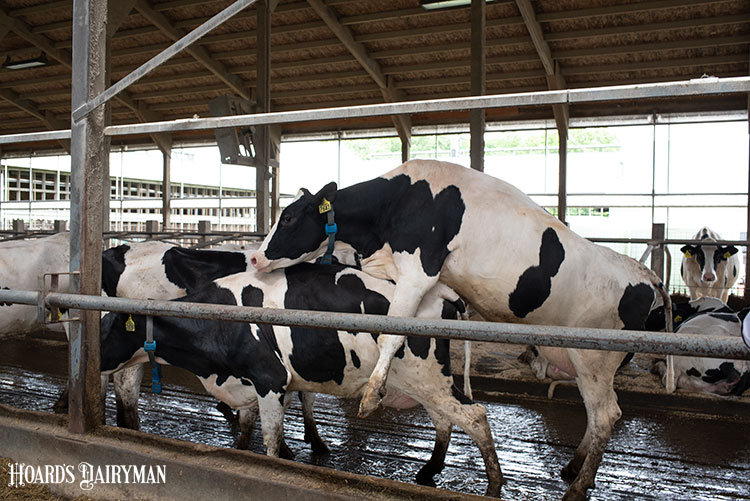
Synchronization programs have vastly improved dairy cattle reproduction since their introduction in the mid-1990s. Pregnancy rates (PR) that once stood in the mid-teens have been replaced by those in the 20s, 30s, and even 40s when one considers the elite herds that win awards from the Dairy Cattle Reproduction Council.
As a point of reference, PR is an overall indicator for reproductive performance in dairy herds. It is defined as the percentage of eligible cows that become pregnant in a given time period, typically a 21-day interval.
While genetic trends in reproduction had been on a downward slope since the 1950s, that tide has also turned, though not as fast as enhancements to cow side care on reproductive therapies. However, progress has been picking up with the introduction of genomic testing that has gained significant on-farm acceptance in recent years.
To test the theory that genetics is indeed making an impact, the University of Florida’s Ricardo Chebel and Anderson Veronese carried out a study that genomic tested just over 1,000 Holsteins heifers within two months of birth. The duo then followed those heifers through the first lactation. The main trait tracked was daughter pregnancy rate (DPR).
Just prior to joining the milking herd, soon-to-calve heifers were fitted with automated monitoring devices. These electronic devices helped track estrous activity, and blood samples drawn by the research team also tracked a number of metabolic factors.
The Florida-based researchers found that young cows with high genomic predictions for DPR were more likely to:
- Have a higher probability to show estrus
- Show more estrus and have fewer “silent” heats
- Have a longer estrus (one hour longer for the top quartile versus the lowest quartile)
- Display more peak estrous activity
- Have lower rumination activity during estrus
- And, most importantly, have a greater chance to become pregnant.
Additionally, cows with higher DPR values had less change in body condition score, a positive association with insulin-like growth factor, higher glucose levels, and lower nonesterified fatty acid concentration (NEFA).
“There’s definitely a genetic component on how heifers and cows show estrus,” said Chebel. “Greater estrous intensity is observed among animals with greater daughter pregnancy rates. Selection for DPR may improve hormonal and metabolic status of cows postpartum, leading to earlier resumption of cyclicity, and may improve detection of estrus because it is positively associated with estrous characteristics.”








